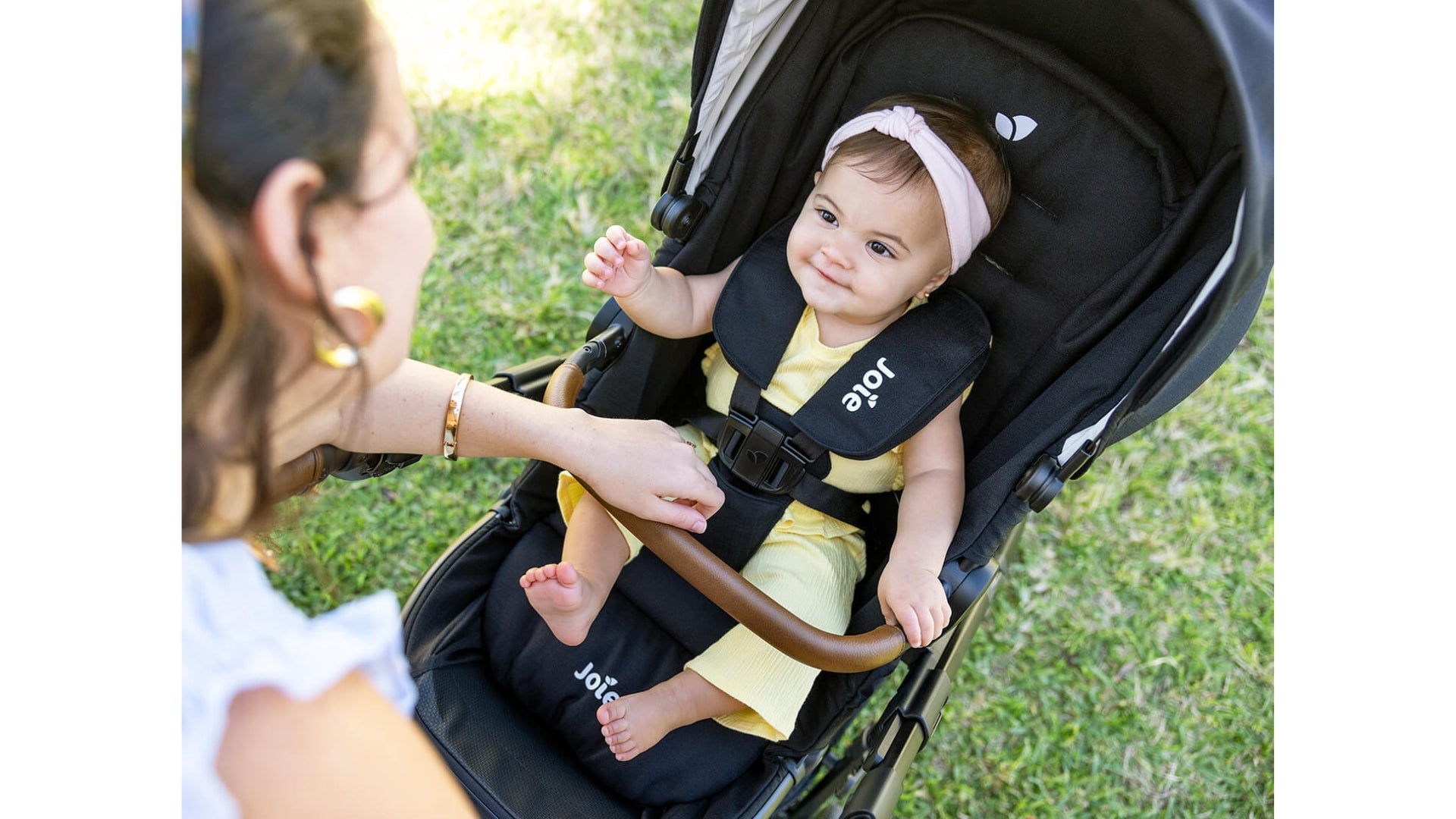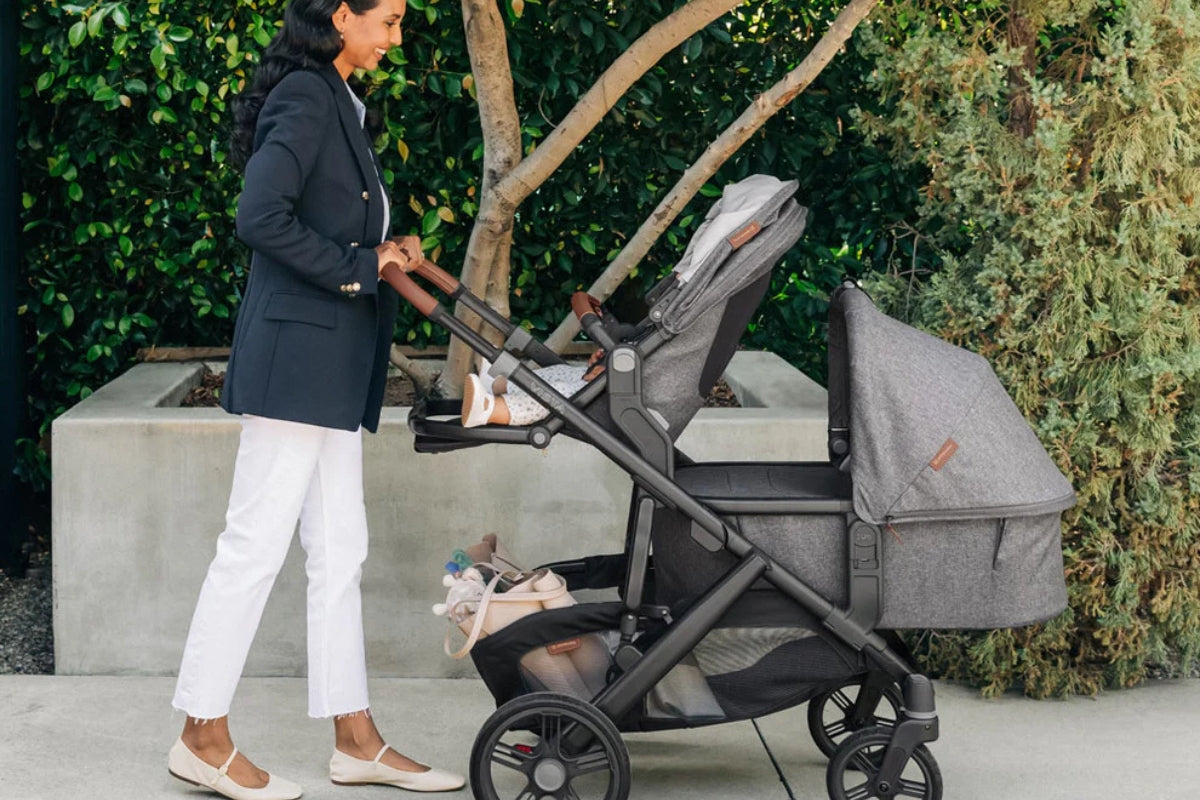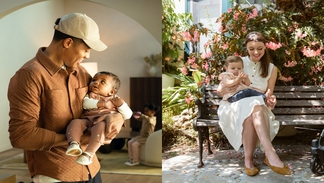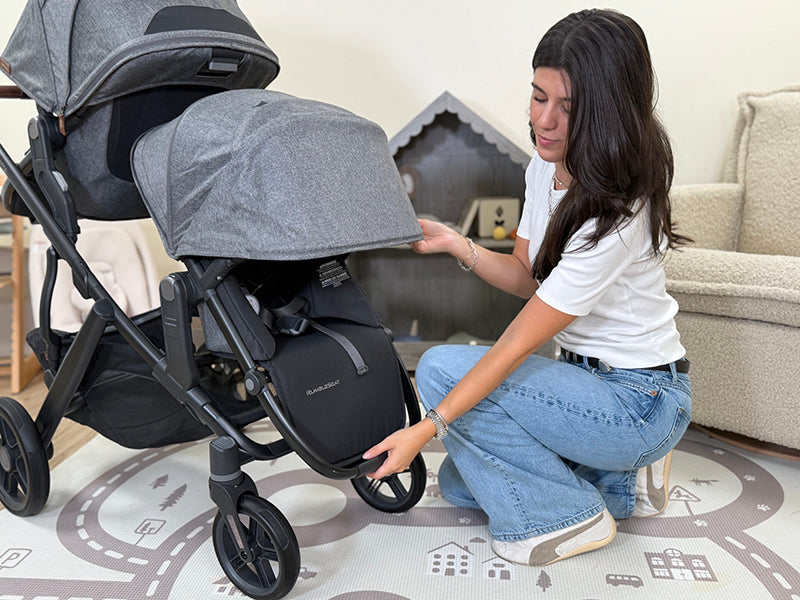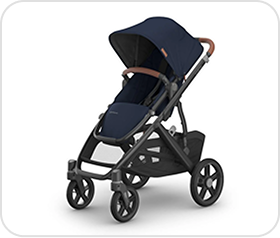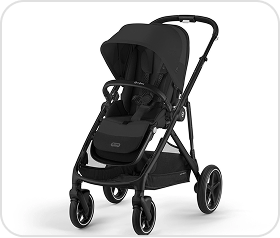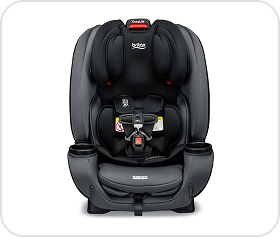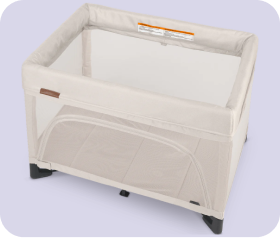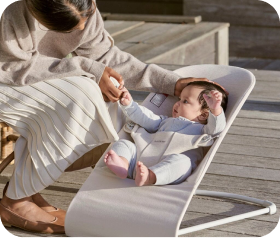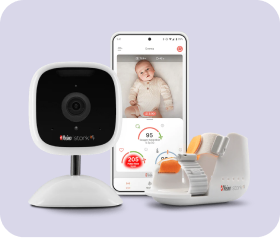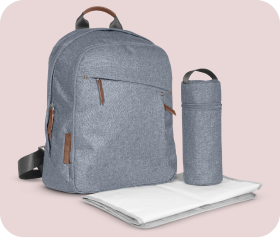
Best Convertible Strollers That Grow With Your Family
A convertible stroller is the kind of baby gear that grows right alongside your family. These clever strollers come ready for your first little one, with optional accessories that make it easy to expand into a double stroller when baby number two comes along. They’re a practical, future-proof choice for parents who want one stroller that can handle every stage. With so many options on the market, we’ve rounded up our favorite convertible strollers that stand out for their quality, versatility, and ease of use—perfect whether you have one child now or plan to grow your family soon. Read on to explore today’s best convertible strollers for every lifestyle.
Why Go For A Convertible Stroller
Convertible strollers are quickly becoming a must-have for modern parents—but what makes them so special? In short, a convertible stroller starts as a single stroller and can easily adapt into a double when your family expands. Considering the investment that comes with choosing a high-quality stroller, it’s smart to think beyond the newborn stage and pick something that can grow with you.
It’s easy to feel overwhelmed when shopping for your first baby, and thinking about a second one might seem a little early. But planning ahead can make a huge difference later. Choosing a convertible stroller now means you’ll have one piece of gear that evolves as your family does—saving you money, storage space, and the hassle of starting over when baby number two arrives.
Best Convertible, Single-to-Double Strollers
-
Bugaboo Donkey
- Bugaboo Kangaroo
- Cybex e-Gazelle S
- Joie Chive
- Stokke YOYO
- UPPAbaby Vista
- Veer Switchback&Roll
How We Picked the Best Convertible Strollers
With decades of experience helping parents find baby gear that truly fits their lives, we know what makes a stroller worth investing in. When selecting the best convertible strollers, we looked for models that work beautifully as a single stroller yet transition smoothly into a double configuration when needed. Every pick on our list offers that perfect balance of flexibility, comfort, and long-term value.
We also made sure to include a range of designs to suit different family routines—whether you’re navigating busy city streets, strolling through suburban parks, or always on the go. Parenthood changes fast, and your stroller should keep up. The models we chose are ready for whatever comes next, offering the adaptability and performance parents need from the very first ride onward.

Bugaboo Donkey - Single to Side-by-Side Double
The Bugaboo Donkey is truly in a class of its own. It’s the only convertible stroller that expands horizontally into a side-by-side double, making it ideal for twins or siblings close in age. As the most established model in the Bugaboo lineup, it’s been supporting families for over a decade—talk about tried and true! Out of the box, the mono configuration includes a bassinet, toddler seat, and a side luggage basket. That side basket is a parent favorite, offering easy-access storage and helping the Donkey achieve its impressive 44 lbs total storage capacity. (It really lives up to its name!) Converting to Duo mode is effortless—no adapters required. Simply expand the frame and add the second seat. With smooth steering, premium materials, and thoughtful design, the Bugaboo Donkey remains a top choice among convertible strollers for parents seeking versatility and performance.

Why We Love The Bugaboo Donkey
- Converts to side-by-side double
- Bassinet included
- Effortless steering
- Side luggage basket included
The Bugaboo Donkey is Best For:
- Main mode of transportation for City families
- Suburban families that do a lot of walking
- Families prioritizing lots of storage space
- Twins
- Newborns, infants, toddlers
Bugaboo Donkey Highlights:
- Converts to a double with Duo extension set
- Large total storage up to 44 lbs
- Easy to maneuver on all terrains
- Breezy bassinet with aerated mattress
- Large extendable UPF 50+ sun canopy
- Reversible, reclining seats
- Adjustable five-point safety harness
- Height adjustable handlebar
- One-piece self-standing fold or two-piece compact fold
- Car seat compatible (adapters needed)
Bugaboo Donkey Specs and Dimensions:
- Recommended Use: Birth to 50 lbs
- Weight: 32.1 lbs
- Folded Dimensions: 20.5 x 23.6 x 35.4"
- Open Dimensions: 41.7 x 23.6 x 43.7"
- Storage Capacity: 44 lbs (22 lbs in under-carriage basket, 22 lbs in side luggage basket)
- What's included: Stroller, seat fabric, bassinet fabric and mattress, side-luggage basket, bumper bar, seat rain cover
- Warranty: 2 years standard warranty, 4 years if registered with Bugaboo
Bugaboo Donkey Accessories:
- Duo Extension Set (for conversion to double)
- Cup Holder
- Snack Tray
- Stroller Organizer
- Performance Rain Cover
- Parasol
- Bassinet Stand and Donkey Bassinet Stand Adapters
- Travel Bag
- Ride-on-board
- Changing Backpack
- Footmuff
- Performance Footmuff
- Dual Comfort Seat Liner
- Breezy Sun Canopy
- Mono Infant Car Seat Adapter
- Twin Infant Car Seat Adapter

Bugaboo Kangaroo- Newborn + Toddler Comfort
Bugaboo has built its name on engineering excellence, performance, and unmatched quality—and the Bugaboo Kangaroo carries that legacy forward beautifully. While it’s a newer model without the long history of the Donkey, it’s already earning its place as a fan favorite. Unlike the Donkey’s side-by-side setup, the Kangaroo converts into an in-line tandem stroller, positioning the sibling seat in front of the main seat for a more compact design. Parents can choose from over 20 different configurations to fit their family’s lifestyle. Plus, it comes with a bassinet and infant car seat adapters included, so you’re ready to roll from day one. Whether you’re navigating city sidewalks or park paths, the Kangaroo delivers the smooth ride and clever functionality Bugaboo is known for.

Why We Love The Bugaboo Kangaroo
- Bassinet included
- Elevated bassinet/seat option
- Tall toddler seat with plenty of room for growth
- Infant car seat adapter included
- One handed fold
The Bugaboo Kangaroo Is Best For:
- City life
- Suburban life
- Newborns, infants, toddlers
- Siblings of different ages
Bugaboo Kangaroo Highlights:
- XL wheels and optimal suspension system
- Convertible to a tandem stroller with sibling seat (sold separately)
- 20+ Configurations
- One-hand fold with a self-standing design
- Height adjustable handlebar
- Reclining, reversible seat
- XL underseat basket holds 28.6 lbs
- Spacious bassinet with breezy panels
- PureBreeze™ mattress with antibacterial technology
- High padded seat with adjustable footrest
- Extendable, height-adjustable sun canopy
- Car seat compatible (adapters included)
- 100% vegetarian leather handlebar grips
- Made with bio-based material for a lower environmental impact
- Total CO2 footprint of 273 lbs (124 kg), a reduction of 16% to date
Bugaboo Kangaroo Specs and Dimensions:
- Recommended Use: Birth to 50 lbs
- Weight: 28.7 lbs
- Folded Dimensions: 19.6 x 24.4 x 38.1"
- Open Dimensions: 39.3 x 24.4 x 44.49"
- Storage Capacity: 28.6 lbs
- What's included: Stroller, seat fabric, bassinet fabric and mattress, bumper bar, infant car seat adapters
- Warranty: 2 years standard warranty, 4 years if registered with Bugaboo
Bugaboo Kangaroo Accessories:
- Sibling Seat (for conversion to double)
- Newborn Adapter
- Cup Holder
- Snack Tray
- Stroller Organizer
- Performance Rain Cover
- Parasol
- Bassinet Stand and Kangaroo Bassinet Stand Adapters
- Travel Bag
- Ride-on-board
- Changing Backpack
- Footmuff
- Performance Footmuff
- Dual Comfort Seat Liner
- Breezy Sun Canopy

Cybex eGazelle - Innovative Smart Stroller
The Cybex eGazelle S stands as the most innovative convertible stroller on the market. Designed for tech-savvy families, it features push assist and a built-in rocking function that redefine modern strolling. Sensors in the handlebar detect when you’re exerting extra effort, automatically engaging the stroller’s motor to help you push uphill or across uneven ground. Need a moment of hands-free calm? With the push of a button, the eGazelle’s Rocking feature gently soothes your baby for you. It also includes a shopping tote for added storage in single mode, offers a compact fold and comes with infant car seat adapters for easy travel system use. The Cybex eGazelle S combines cutting-edge technology with everyday practicality for families on the move.

Why We Love The Cybex eGazelle
- Revolutionary tech
- Push assist
- Rocking mode
- Included shopping basket
- Included car seat adapter
- Easy to use one-pull harness
The Cybex eGazelle Is Best For:
- Tech loving parents
- Hilly neighborhoods
- Rougher terrain
- City life
- Siblings of different ages
- Twins
- Infants, toddlers
Cybex eGazelle S Highlights:
- Accommodates two infant car seats
- Accommodates two cots
- Accommodates two seated children
- 20+ configurations
- Push assist
- Rocking mode
- Advanced front wheel and rear frame suspension
- Reversible reclining seat
- Integrated height adjustable seat adapters
- One-pull harness
- Adjustable footrest
- XXL UPF50+ sun canopy with mesh window
- Spacious under carriage basket
- Included shopping basket for single stroller use
- Height adjustable handlebar
Cybex eGazelle S Specs and Dimensions:
- Recommended Use: Seat from 3 months to 50 lbs from birth with car or infant car seat
- Weight: 32.4 lbs
- Folded Dimensions: 32.3 x 26 x 15.3"
- Open Dimensions: 37.2 x 26 x 43.3"
- Storage Capacity: 55 lbs (30 lbs in under-carriage basket, 25 lbs in shopping basket in single configuration)
- What's included: Stroller, seat unit, shopping basket, bumper bar, cup holder, car seat adapter, rain cover, battery pack and charger
- Warranty: 2 years
Cybex eGazelle S Accessories:
- Second Seat (for conversion to double)
- Cot
- Second Infant Car Seat Adapter Set
- Snack Tray
- Rain Cover

Joie Chive - Budget Friendly with Room for Two
The Joie Chive delivers outstanding function, comfort, and practicality—all at a family-friendly price point. For added value, it comes with infant car seat adapters and a cup holder right in the box. Pair it with a Joie infant car seat to create a seamless travel system for on-the-go convenience. Designed for all terrains, the Chive features smooth suspension and durable wheels, providing a cushioned ride whether you’re strolling suburban streets or navigating busy city sidewalks. Integrated adapters make it easy to convert from single to double mode. The seat offers generous space for growing toddlers, with comfort details like a UV-protected canopy and adjustable calf support. To expand your setup, simply purchase the Chive Sibling Seat to convert to a double, or add the Chive Shopping Basket for extra storage—no additional adapters required.

Why We Love The Joie Chive
- Accessible price point
- Included car seat adapters
- Included cup holder
- Compatible with Joie Infant Car Seats
The Joie Chive Is Best For
- Parents seeking the best value
- Siblings of different ages
- Suburban life
- City life
- Infants, toddlers
Joie Chive Highlights:
- Over 20 configurations
- Quick, standing fold
- Built in adapters for second seat
- Infant car seat compatible with Joie Infant Car Seats
- Included infant car seat adapters
- Rubberized all-terrain tires
- Reversible reclining seat
- Adjustable footrest
- UPF 50+ water repellent canopy with mesh peek-a-boo window
- Advanced suspension in front wheels, frame and seat
- Height adjustable handle bar
Joie Chive Specs and Dimensions
- Recommended Use: up to 50 lbs
- Weight: 27.5 lbs
- Folded Dimensions: 13.8 x 25.6 x 32.3"
- Open Dimensions: 45.5 x 25.5 x 43"
- Storage Capacity: 20 lbs
- What's included: Stroller, car seat adapters for Joie infant car seats, cupholder
- Warranty: 1 year
Joie Chive Accessories
- Sibling Seat (for conversion to double)
- Shopping Basket

Stokke YOYO - Easy Travel Single or Double
The Stokke YOYO is the original compact travel stroller, folding down to a cabin-approved size that’s perfect for flying families. While it’s long been a favorite among jet-setting parents, it’s equally suited for everyday use. With compatible infant car seat adapters, the YOYO transforms into a lightweight travel system, pairing easily with top-rated car seats for seamless transitions from car to stroller. It also converts into an in-line double stroller with the addition of the YOYO Connect attachment. With this setup, the YOYO can hold two seated children from 6 months to 48 lbs, or even accommodate two bassinets for twins. Impressively, the YOYO + Connect is the only double stroller approved for airplane travel, making it a standout choice for families who value portability without compromise.

Why We Love The Stokke YOYO
- Compact fold
- Lightweight
- Infant car seat compatible
- Overhead bin compatible
The Stokke YOYO Is Best For
- Travel
- City families utilizing public transportation
- Suburban families for on-the-go
- Smooth and paved surfaces
- Infants, toddlers
- Siblings of different ages
Stokke YOYO Highlights:
- Quick fold
- Integrated carry strap
- Reflective wheels
- Nimble manuverability
- Extensive accessory assortment
- Multi-position recline
- 4-wheel suspension
- Extendable UV protection canopy with peek-a-boo ventilation window
Stokke YOYO Specs and Dimensions
- Recommended Use: From birth with accessories, 6 months to 48 lbs in seat
- Weight: 14.8 lbs
- Folded Dimensions: 20.5" L x 17.3" W x 7.1" H
- Open Dimensions: 41.7" L x 17.3" W x 33.8" H
- Storage Capacity: 22 lbs
- What's included: Stroller, protective bag, carry strap
- Warranty: 2 years
Stokke YOYO Accessories:
- Connect (for conversion to double)
- Infant Car Seat Adapters
- Bassinet
- Newborn kit
- 6 Months+ Seat Pack
- Rain Cover
- Cup Holder
-
Parasol
- Rolling Bag
- Ride-on-board
- Travel Bag

UPPAbaby Vista - Urban Transportation Icon
UPPAbaby has become a household name in baby gear—largely thanks to the enduring popularity of the Vista. (Chances are, you’ve seen one with nearly every new parent you know!) Loved for its parent-friendly features, easy handling, durable build, and oversized storage basket with a 30 lb capacity, the Vista is designed to grow alongside your family. The stroller easily converts to a double stroller with the Vista Rumble Seat, which attaches to the front of the frame. In the latest Vista V3, the bassinet is now offered as an optional add-on rather than standard, giving parents more flexibility to customize based on their needs—whether you’re upgrading to a premium double for a toddler and infant, or starting from scratch with your first baby. With a wide range of accessories available, the UPPAbaby Vista V3 remains one of the most adaptable and reliable convertible strollers you can buy.

Why We Love the UPPAbaby Vista
- GREENGUARD Gold Certified
- Reliable Performance
- Adapter-less connection with UPPAbaby Infant Car Seats
- Large storage basket
The UPPAbaby Vista is Best For:
- City life
- Suburban life
- Travel system use
- Twins
- Siblings of different ages
- Infant, toddlers
UPPAbaby Vista Highlights:
- All-Weather Comfort Seat with Seasonal Seat Liner for cooler days or converts to mesh for warmer days
- Enhanced FlexRide Strolling Suspension delivers a smooth ride whether strolling with 1, 2, or 3
- Quick-to-secure harness system with magnetic buckle and easy-to-adjust, no-rethread harness
- Parent-facing and forward-facing full size, toddler seat grows with child up to 50 lbs
- Effortlessly folds in one simple step & stands when folded for compact storage
- Extendable, water-repellent UPF 50+ canopy and easy-to-peek window for added air flow
- Extra-large, easy-access basket with 30 lb. weight limit to easily store all your essentials while strolling
- Premium fabrics and full-grain REACH certified leather details
- Never flat tires for durability and smooth strolling through various terrain
- Reflective trims on wheels and basket to enhance visibility while strolling
- Ability to transport up to three children with RumbleSeat and PiggyBack accessories
- One-handed multi-position recline for those “resting strolls”
- One-hand, adjustable handlebar to better accommodate different heights
- Front wheel locks with visual indicators for parent’s piece of mind
- Adjustable footrest positions feet and legs comfortably as they grow
- Directly compatible with UPPAbaby Infant Car Seats
- GREENGUARD Gold certified to support healthier air quality & low chemical emissions
UPPAbaby Vista V3 Specs and Dimensions:
- Recommended Use: From 3 months to 50 lbs
- Weight: 27.6 lbs
- Folded Dimensions: 16.3 x 25.7 x 33.8″
- Open Dimensions: 36.5 x 25.7 x 39.5″
- Storage Capacity: 30 lbs
- What's included: Stroller, seat bug net, seat rain cover, seasonal seat liner, seat storage bag, bumper bar
- Warranty: 3 years
UPPAbaby Vista V3 Accessories:
- Rumble Seat V3 (for conversion to double)
- Bassinet V3
- Bassinet Stand
- Infant SnugSeat
- Carry-All Parent Organizer
- Cup Holder
- Cozy Ganoosh
- Cozy Handmuffs
- Snack Tray
- Travel Bag
- Changing Backpack
- PiggyBack Ride-Along Board
-
Bevvy Stroller Basket Cooler
- Upper Adapters
- Upper Maxi Cosi Adapters
- Lower Adapters
- Lower Maxi Cosi Adapters
- Peg Perego Adapters for Vista
- Clek Liing Adapters for Vista
*For more reading on converting the UPPAbaby Vista refer to >>> UPPAbaby Vista Adapter Guide

Veer Switchback&Roll - All-Terrain Adventure Mobile
Veer is a brand made for families who crave adventure—and the Switchback & Roll captures that spirit perfectly. The heart of the system is the Switchback Seat, which serves as the main stroller seat but also doubles as a portable highchair, bike seat, or camping chair with the right accessories. When it’s time to go double, simply add another Switchback Seat onto the &Roll frame. It’s the only stroller seat with built-in shock absorption, keeping your child comfortable no matter how bumpy the trail. The &Roll frame itself offers true all-terrain performance, whether you’re hitting the beach, exploring muddy paths, or strolling your neighborhood park. And cleanup is a breeze—the entire stroller is hose-down ready. Rugged, versatile, and built for exploration, the Veer Switchback & Roll is the ultimate choice for outdoor-loving parents.

Why We Love the Veer Switchback&Roll
- All-terrain Performance
- Impact absorbing seats
- Hose washable design
- Switchback Seat offers versatile mult-purpose use
- One handed fold
- Extensive accessory assortment
The Veer Switchback&Roll Is Best For:
- Rough terrain
- Suburban life
- Siblings of different ages
- Twins
- Infants, toddlers
Veer Switchback &Roll Highlights:
- Converts to a double with addition of second seat
- All-terrain Performance
- Reversible, Reclining Seat
- Bumper bar
- Built-in straps in Switchback Seat to detach and use as instant mealtime booster
- Dual seat dampeners for impact absorption
- Exoskeleton seat bottom and back absorbs impact
- Cozy, machine or hose washable softgoods
- Extra extendable high canopy with peak-a-boo window and pop-out sun visor
- One-click, 3 position calf support
- One-handed open and fold
- Soft, supple Napa leather
- Hose washable, robotically welded aluminum frame
- Tunable rear shocks
- Dual front suspension
- XL never-flat tires that absorb bumps
- XL storage basket with zipper pouches
- Adjustable handle height
- Infant Car Seat Compatible (adapter sold separately)
Veer Switchback&Roll Specs and Dimensions:
- Recommended Use: up to 50 lbs
- Weight: 28.75 lbs
- Folded Dimensions: 36 x 23.6 x 15"
- Open Dimensions: 34 x 25.5 x 44"
- Storage Capacity: 30 lbs
- What's included: Stroller frame / Switchback seat included bumper bar
- Warranty: 2 years
Veer Switchback&Roll Accessories:
- Switchback Seat Luxe
- Second Seat Adapter Kit
- Cup Holder
- Snack Tray
- Parent Organizer
- Weather Cover
- Bassinet
- Maxi Cosi/ Nuna Infant Car Seat Adapters
- UPPAbaby Infant Car Seat Adapters
- &Chill Camp Chair Legs
- Lunch Cooler
- Day Cooler
- Flex Stroller Fan
- Switchback Seat Bike Mount
- Travel Bag
- Footmuff
*For more reading on Veer Switchback Systems refer to >>> Everything You Need To Know About The Veer Switchback Seat
FAQs About Convertible, Single-to-Double Strollers

What is a convertible stroller?
A convertible stroller is designed to grow with your family. It starts as a single stroller for one child and can later be converted into a double stroller by adding a second seat, bassinet, or car seat attachment—no need to buy a completely new stroller when your family expands.
How does a single-to-double stroller work?
A single-to-double stroller uses an adaptable frame that allows parents to attach a second seat or infant car seat as their family grows. Some expand side-by-side, while others convert to a tandem or in-line setup with one seat positioned behind or in front of the other.
What are the benefits of a convertible stroller?
Convertible strollers save money and storage space since you only need one stroller that evolves over time. They’re also perfect for growing families, offering flexibility, long-term value, and convenience without sacrificing comfort or style.
Is a convertible stroller worth the investment?
Yes—if you plan to have more than one child, a convertible stroller can be a smart long-term purchase. It eliminates the need to buy a separate double stroller later, making it a cost-effective and practical choice for many families.
Can I use a convertible stroller for twins?
Many convertible strollers can be used for twins, depending on the model. Look for designs that allow two bassinets or two infant car seats to attach at the same time, or that offer a true side-by-side configuration.
Do I need adapters to turn my stroller into a double?
That depends on the brand. Some convertible strollers, like the Bugaboo Donkey, expand into a double without adapters, while others require add-on pieces or connectors to attach the second seat or car seat.
What’s the difference between a tandem and a side-by-side convertible stroller?
A tandem (in-line) stroller seats one child in front of the other, making it narrower and easier to maneuver through tight spaces. A side-by-side stroller keeps both children on the same level, offering equal views and comfort but taking up more width.
Are convertible strollers heavier than regular single strollers?
Generally, yes. Because they’re built with a stronger frame to support two children, convertible strollers tend to be slightly heavier than standard single strollers. However, most are still designed for easy pushing and smooth steering.
Can I attach an infant car seat to a convertible stroller?
Absolutely. Most convertible strollers are compatible with infant car seats through included or optional adapters, allowing you to create a complete travel system that works from birth through toddlerhood.
Which convertible strollers are the best for growing families?
Some of the most popular convertible single-to-double strollers include the UPPAbaby Vista V3, Bugaboo Donkey, Cybex Gazelle S, Joie Chive, and Veer Switchback & Roll. Each offers unique features and configurations to fit different family lifestyles.
Still Have Questions?
Strolleria is dedicated to making the baby gear buying experience less overwhelming for parents. If you have more questions about convertible strollers that grow with your family, feel free to contact us by emailing us at cs@strolleria.com or chat with us today!




